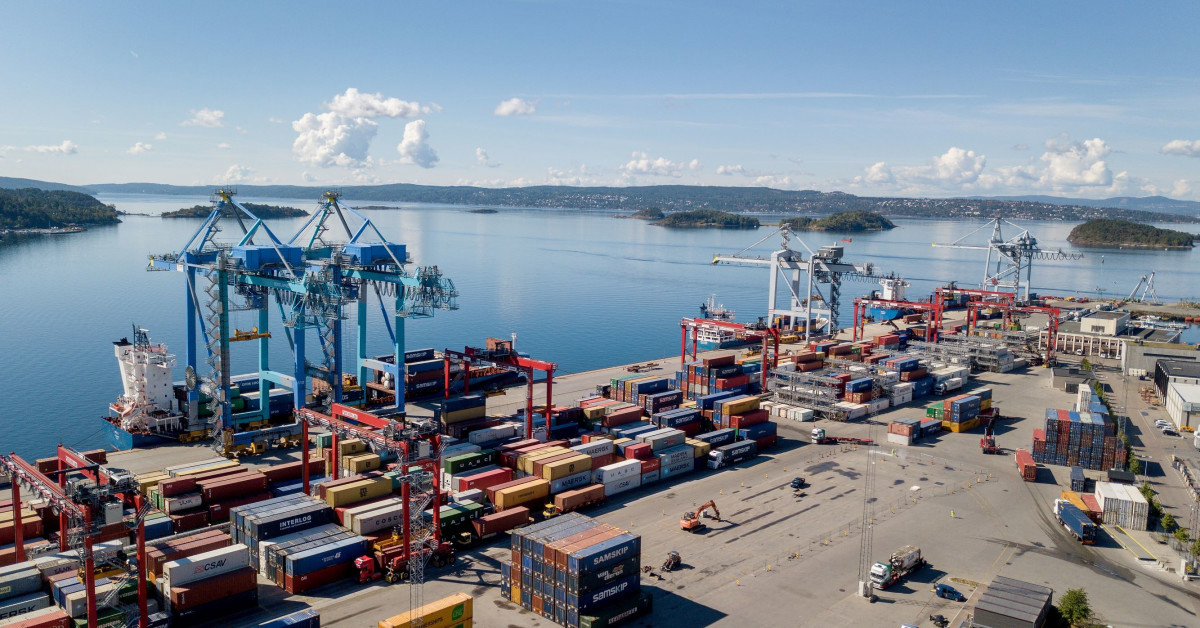The Week in Alt Fuels: Incentivising green port calls
Several ports around the world offer green rebates. But the port incentive network remains too thin and too fragmented to meaningfully shape global shipping behaviour.
 IMAGE: Container terminal in the Norwegian capital city port of Oslo. Oslo Havn
IMAGE: Container terminal in the Norwegian capital city port of Oslo. Oslo Havn
At least 110 global ports have introduced some form of green discounts. 57 have linked them to the Environmental Ship Index (ESI) and 47 to the Green Award certification scheme.
These are voluntary schemes that measure a vessel’s environmental performance compared to current IMO standards, including exhaust emissions.
For instance, a higher ESI scores, out of 100, reflects better engine performance and use of emission-reduction technologies.
The current formula captures carbon dioxide (CO2), nitrogen oxides (NOx) and sulphur oxides (SOx) and gives additional points to vessels equipped with onshore power systems. But it omits methane emissions from LNG-powered ships, a significant gap as LNG vessels continue to grow in number.
A revised ESI formula that includes methane emissions and updated IMO-aligned baselines will apply from 2027.
Even with the current gaps, major ports including ARA and several others across the EU, Japan, Brazil, the UK and the US offer ESI-linked port fee discounts.
Discounts vary across the world.
Norway’s Oslo offers 10–20% concessions for vessels with more than 30–40 ESI points. Japan’s Osaka offers 15% above 30 points.
The Port Authority of New York & New Jersey grants fixed concessions of $1,000–3,000 above 40 points. Australia’s Botany and Kembla offer $1,000–2,500 above 20 and Taiwan International Port offers NT$12,000–14,000 ($384–448) above 40.
Africa’s National Ports Authority offers 10% discounts to vessels carrying Green Award certifications when they call at the ports of Cape Town and Durban.
Some ports bypass these green credentials entirely and base incentives on use of alternative fuels.
Singapore's port authority offers 100% concessions for ships using full battery-electric propulsion or green hydrogen, green ammonia with 25% pilot fuel, green methanol or 100% biofuel.
LNG-fuelled ships with methane slips of less than 1% or ships running on B50–B99 biofuel blends qualify for 30% discounts. LNG-fuelled ships without slip mitigation and ships consuming B24–B49 biofuel blends can get 20% knocked off their prices.
Indian port operator Adani Ports and Logistics offers a 50% port due concession at Dhamra, Dighi and Gangavaram for vessels fuelled by LNG, ammonia, hydrogen or battery-electric propulsion.
On paper, these perks should incentivise cleaner fuels and operational practices.
But in reality, the global incentive network remains sparse.
For instance, a IMO’s Carbon Intensity Indicator (CII) report for 2023 showed that out of around 28,600 ships reporting, some 7,600 received “C” ratings for moderate environmental performance. 3,900 ships received “D” ratings and 1,500 “E” ratings. Nearly 4,000 ships did not report at all.
In that same year, only around 40 ports worldwide offered ESI-linked green fee incentives.
This contrast highlighted that thousands of vessels were operating in the moderate-to-poor performance range, but only a small number of ports were offering incentives to change that.
Even today, the mismatch remains stark.
UN data for this year shows that the global fleet is made up of 112,500 commercial vessels above 100 gross tonnes, but only some ports worldwide offer structured green discounts.
The average score among 6,500 vessels listed with ESI has just been 31.9 this year, well below the 40-point threshold many ports set for higher-tier discounts.
Where incentives do exist, they vary widely by ports, vessel types and metrics. They lack consistency around green credentials. For example, out of a combined 104 ports across both schemes, only 19 offer both ESI- and Green Award-linked rebates.
Another challenge could be that these rebates are nowhere near big enough to trigger much fuel switching.
A 2018 International Transport Forum (ITF) report noted that “green port fees can only work if they create a large enough incentive in relation to the operating costs of shipping companies”. It suggested imposing higher penalties for ships with greater emissions or those that score poorly towards environmental schemes.
A combination of a fragmented patchwork of port incentives and small rebates suggests that the current network is still too inconsistent to influence large-scale behavioural change.
In other news this week, The European Commission has announced more than €600 million (about $695 million) in funding to 70 projects. Some of these projects focus on expanding alternative fuel infrastructure such as electric charging stations, hydrogen refuelling points, electricity supply systems and ammonia and methanol bunkering facilities across 24 EU countries.
US-based project developer OroCarbo is planning to build a 100 mt/day biomethanol plant in Oroville, California. The fuel will be primarily be supplied for bunkering in California, Haffner Energy said.
Singapore-based renewable energy startup Destiny Energy plans to build a 100,000 mt/year green ammonia plant in Egypt’s Suez Canal Economic Zone. “We are in discussions with few large European buyers to offtake the entire volume of green ammonia from the SC Zone port,” Destiny Energy’s chief executive Vijay Sirse told ENGINE, without revealing company names.
By Konica Bhatt
Please get in touch with comments or additional info to news@engine.online





